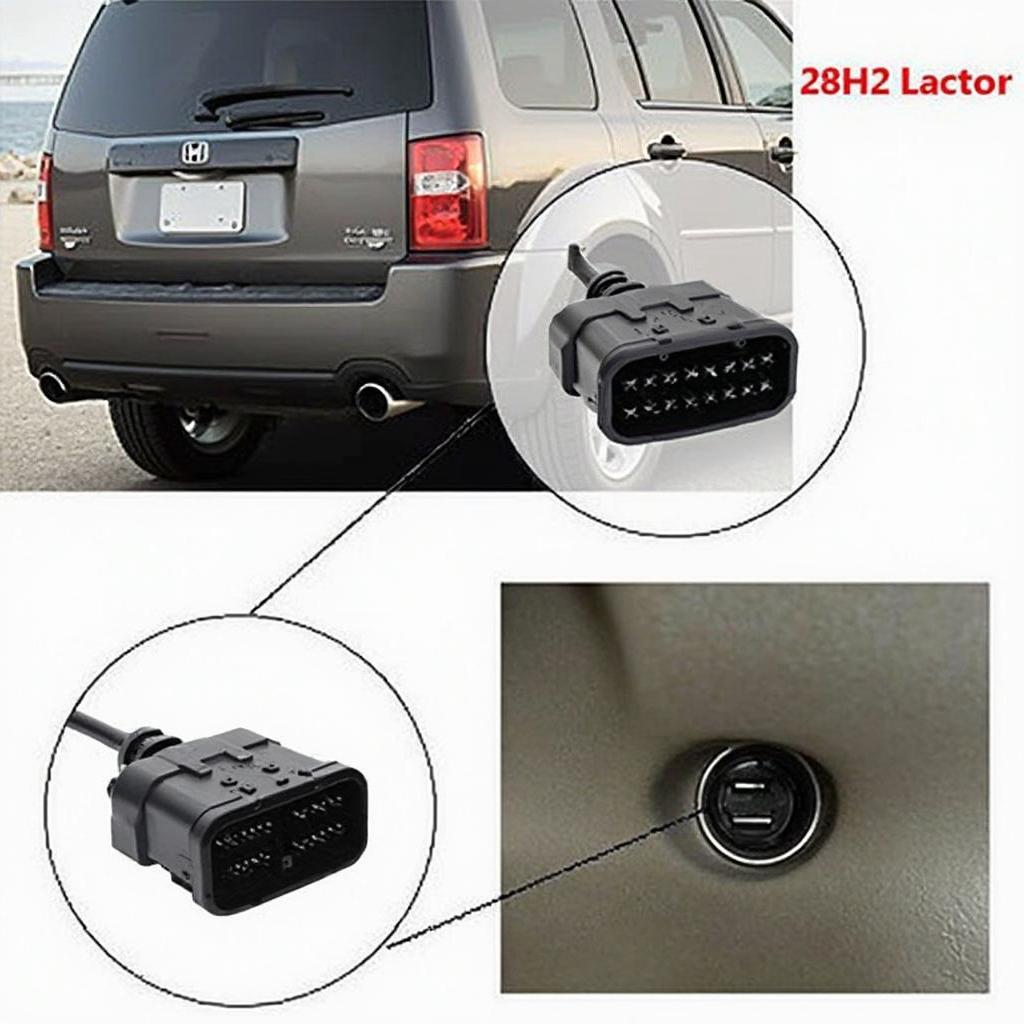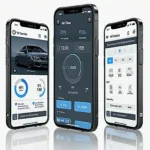Locating the OBD2 connector in your 2013 Honda Pilot can sometimes feel like searching for a hidden treasure. This guide provides a detailed walkthrough, ensuring you can quickly find your OBD2 port and connect your diagnostic scanner with ease. We’ll cover everything from its standard location to troubleshooting tips, empowering you to take control of your vehicle’s diagnostics.
Where to Find the OBD2 Port in Your 2013 Honda Pilot
The OBD2 connector in a 2013 Honda Pilot is typically located beneath the driver’s side dashboard, to the left of the steering column. It’s a female, 16-pin trapezoidal port, often protected by a small cover. This standardized location makes it accessible for most OBD2 scanners. However, variations can occur, so knowing the general area is crucial.
Common Challenges and Troubleshooting Tips
Sometimes, the OBD2 connector can be tricky to find. Perhaps a previous owner moved it, or it’s hidden behind a panel. Here’s a step-by-step guide to help you troubleshoot:
- Check the Standard Location: First, look under the driver’s side dash, near the steering column. Feel around for the characteristic trapezoidal shape.
- Look for a Cover: The port might be covered by a plastic panel. Gently pull or pry to remove it.
- Use a Flashlight: If visibility is an issue, use a flashlight to illuminate the area.
- Consult Your Owner’s Manual: Your Pilot’s owner’s manual should contain a diagram showing the exact location of the OBD2 port.
Why is Knowing the OBD2 Connector Location Important?
The OBD2 port is your gateway to your vehicle’s diagnostic information. By connecting an OBD2 scanner, you can:
- Read and Clear Trouble Codes: Diagnose the check engine light and other issues.
- Monitor Real-Time Data: Observe engine performance parameters like speed, RPM, and fuel economy.
- Perform Emissions Tests: Ensure your vehicle meets environmental regulations.
Understanding the OBD2 Standard
The OBD2 (On-Board Diagnostics II) standard is a universal system for diagnosing vehicle problems. It’s mandated in all cars sold in the United States since 1996, making it a valuable tool for car owners and mechanics alike.
Beyond the Basics: Advanced OBD2 Functionality
While basic OBD2 scanners can read and clear codes, more advanced models offer additional features:
- Live Data Graphing: Visualize data trends over time.
- ABS and Airbag Diagnostics: Access and diagnose issues within these systems.
- Bi-directional Controls: Test components like actuators and solenoids.
What if I Still Can’t Find the OBD2 Connector?
If you’ve exhausted all troubleshooting options and still can’t locate the OBD2 connector, consult a qualified mechanic. They have the expertise and tools to pinpoint its location.
“Knowing the location of your OBD2 port and how to use a scanner empowers car owners. It allows them to understand their vehicle’s health and potentially save money on repairs,” says John Smith, ASE Certified Master Technician.
Conclusion
Locating the obd2 connector location 2013 pilot is a crucial first step in diagnosing and resolving vehicle issues. This guide has provided you with the knowledge and resources to find your OBD2 port and leverage its power. With the ability to monitor your car’s health, you can stay ahead of potential problems and keep your 2013 Honda Pilot running smoothly.
FAQ
- What does OBD2 stand for? OBD2 stands for On-Board Diagnostics II.
- Is the OBD2 port location standardized? Yes, it’s typically located under the driver’s side dashboard.
- What can I do with an OBD2 scanner? Read and clear trouble codes, monitor real-time data, and perform emissions tests.
- What if I can’t find my OBD2 port? Consult your owner’s manual or a qualified mechanic.
- Are all OBD2 scanners the same? No, they vary in features and capabilities.
- Do I need a specific OBD2 scanner for my 2013 Honda Pilot? Most standard OBD2 scanners will work.
- Can I damage my car by using an OBD2 scanner? No, using a scanner correctly is safe.
Need further assistance? Reach out to our 24/7 customer support team via WhatsApp: +1(641)206-8880, Email: [email protected] or visit us at 789 Elm Street, San Francisco, CA 94102, USA.


